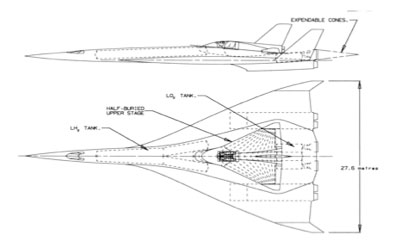Space tourism is not a hoax: an open letter to Heinz Pfefferby David Ashford
|
| Space tourism, far from being a hoax, is likely to be the main driver towards low-cost access to space. |
In the UK, my Member of Parliament was interested in our study and he persuaded the then Minister, Ian Taylor MP, to sponsor an independent review, which was run by the British National Space Centre.3 This review broadly endorsed the conclusions, the most important of which were that new technology was not needed and that development cost would be equivalent to one or two shuttle flights. The cost per flight, when fully mature, with a payload of six passengers or crew for space stations, would be “measured in units of one hundred thousand dollars”. These estimates directly contradict your statement that, “Reusable systems have been studied extensively all over the world, and they are found to be horrendously expensive”.
You go on to say that, “the full cost of a shuttle launch has been estimated to be $1.5 billion.” A key point here is that the shuttle is not fully reusable—the external tank is expendable and the solid rocket boosters are recyclable. The safety of the crew therefore depends on large complex components that are in effect single-use. It is not much of an exaggeration to say that every time the shuttle flies, a crew of seven is flight-testing a ballistic missile.
Our study for ESA is not available electronically but I have written several follow-up papers that are, the latest of which is “The Aviation Approach to Space Transportation”.4 (A shorter and lighter article, “The Great Space Scandal”, is also available.)5
I would like to summarise some of the conclusions from this paper here and invite you to find any flaws in the argument.
- The technology for a two-stage-to-orbit fully reusable spaceplane exists and has done so for several decades.
- Early operational prototypes can be built in experimental workshops, can be flight tested like aeroplanes, and can have relaxed design margins because there will be no effective competition. In this way, development cost to the point of entry into service can be surprisingly low. The design can then be refined in the light of in-service experience. A prototype of Spacecab could be built in seven years for about $2.5 billion.
- The first orbital spaceplane will have a lower marginal cost per flight (crew, fuel, maintenance) than any expendable vehicle of comparable payload (a new vehicle). It will have safety and reliability comparable to prototypes of advanced aeroplanes, which are far better than those of expendable launchers. This will encourage new markets and the expansion of existing ones. This, in turn, will release funding to mature the design, which will further reduce costs, increase traffic levels, and so on down a virtuous cost spiral. Eventually, the lower cost limit of vehicles with mature developments of more or less existing technology will be reached and we will have an airliner service to and from orbit.
- Applying airliner cost estimating relationships to an enlarged and mature development of Spacecab indicates a cost per seat to orbit of around ten to twenty thousand dollars, which is about one thousand times less than the cost today. A cost this low is affordable by middle-income people prepared to save and could open the floodgates of space tourism.
- The long-lead item in achieving airliner maturity is probably the development of a long-life rocket engine, which should be possible after about eight years of in-service product improvement. Thus we could be approaching airliner maturity in about fifteen years (seven for prototypes and eight for maturity).
- Such rapid progress depends on large new markets to provide economies of scale and new sources of funding. Public access to space for business or leisure is the market most likely to provide the required large demand. Achieving the fifteen years timescale that is theoretically possible depends on space tourism taking off like a ‘craze’, like mobile phones or personal computers. Given the great enthusiasm of astronauts for spaceflight, such a craze seems more likely than not.
Thus, space tourism, far from being a hoax, is likely to be the main driver towards low-cost access to space.
Over to you, Heinz!
References
-
“A Preliminary Feasibility Study of the Spacecab Low-Cost Spaceplane and of the Spacecab Demonstrator”, Bristol Spaceplanes Limited Report TR 6, February 1994. Carried out under European Space Agency Contract No. 10411/93/F/TB. Volume 1 reproduced as “The Potential of Spaceplanes” in the Journal of Practical Applications in Space, Spring 1995. (Journal since renamed Space Energy and Transportation.)
“Review of European Aerospace Transporter Studies”, by H Tolle. Proceedings of SAE Space Technology Conference, Palo Alto, California, May 1967. (This paper describes designs by B.A.C., Bölkow, Bristol Siddeley, Dassault, ERNO, Hawker Siddeley, and Junkers.)
Letter from Ian Taylor MBE MP, Parliamentary Under-Secretary of State for Trade and Technology, to the Rt Hon Sir John Cope MP, March 1995.
“An Aviation Approach to Space Transportation”, David Ashford, Aeronautical Journal of the Royal Aeronautical Society, August 2009.
“The Great Space Scandal”, David Ashford, Journal of the Institution of Engineering Designers, November/December 2009.
